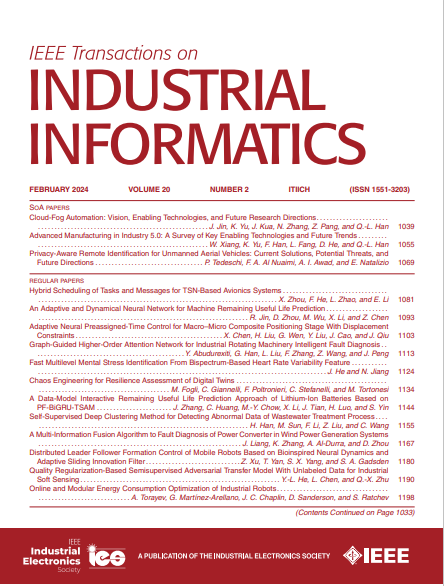视频异常检测系统的无监督学习多尺度恢复扩散模型
IF 9.9
1区 计算机科学
Q1 AUTOMATION & CONTROL SYSTEMS
引用次数: 0
摘要
随着智能工业和智慧城市的快速发展,监控设备的数量不断增加,大大增加了实时视频监控中对无监督自动异常检测的需求,这种检测使用的是原始数据,无需费力的人工标注。现有的视频异常检测(VAD)方法在利用重构或预测等借口任务来识别异常事件时存在局限性,因为这些任务与异常检测的基本目标并不完全一致和互补。在扩散模型最新进展的激励下,我们提出了一个多尺度的恢复扩散模型,该模型依赖于所提出的新的有效的借口任务——恢复来引入生成速度的概念。它在无监督异常检测场景中利用关键的逐步生成扩散概率模型。通过结合提出的多尺度时空减法模块,我们的模型在不依赖于其他高级预训练模型的情况下捕获了前景物体更详细的外观和运动信息。此外,创新的推挽损失通过假标签进一步扩大了正常和异常事件之间的差异。我们在UCSD Ped1、UCSD Ped2、中大大道、上海科技和UCF-Crime这五个已建立的基准上验证了我们的模型,分别实现了86.01%、99.23%、92.35%、82.49%和74.79%的帧级曲线下面积,超过了其他最先进的无监督VAD方法。本文章由计算机程序翻译,如有差异,请以英文原文为准。
Multiscale Recovery Diffusion Model With Unsupervised Learning for Video Anomaly Detection System
The rapid development of intelligent industry and smart city increases the number of surveillance devices, greatly enhancing the need for unsupervised automatic anomaly detection in real-time video surveillance, which uses raw data without laborious manual annotations. Existing video anomaly detection (VAD) methods encounter limitations when utilizing pretext tasks, such as reconstruction or prediction to identify abnormal events, as these tasks are not completely consistent and complementary with the essential objective of anomaly detection. Motivated by recent advances in diffusion models, we propose a multiscale recovery diffusion model, which relies on the proposed novel and effective pretext task named recovery to introduce the notion of generation speed. It utilizes critical step-by-step generation of diffusion probabilistic models in unsupervised anomaly detection scenarios. By incorporating a proposed multiscale spatial-temporal subtraction module, our model captures more detailed appearance and motion information of foreground objects without relying on other high-level pretrained models. Furthermore, an innovative push–pull loss further extends the disparity between normal and abnormal events through pseudolabels. We validate our model on five established benchmarks: UCSD Ped1, UCSD Ped2, CUHK Avenue, ShanghaiTech, and UCF-Crime, achieving frame-level area under the curves of 86.01%, 99.23%, 92.35%, 82.49%, and 74.79%, respectively, surpassing other state-of-the-art unsupervised VAD methods.
求助全文
通过发布文献求助,成功后即可免费获取论文全文。
去求助
来源期刊

IEEE Transactions on Industrial Informatics
工程技术-工程:工业
CiteScore
24.10
自引率
8.90%
发文量
1202
审稿时长
5.1 months
期刊介绍:
The IEEE Transactions on Industrial Informatics is a multidisciplinary journal dedicated to publishing technical papers that connect theory with practical applications of informatics in industrial settings. It focuses on the utilization of information in intelligent, distributed, and agile industrial automation and control systems. The scope includes topics such as knowledge-based and AI-enhanced automation, intelligent computer control systems, flexible and collaborative manufacturing, industrial informatics in software-defined vehicles and robotics, computer vision, industrial cyber-physical and industrial IoT systems, real-time and networked embedded systems, security in industrial processes, industrial communications, systems interoperability, and human-machine interaction.
 求助内容:
求助内容: 应助结果提醒方式:
应助结果提醒方式:


